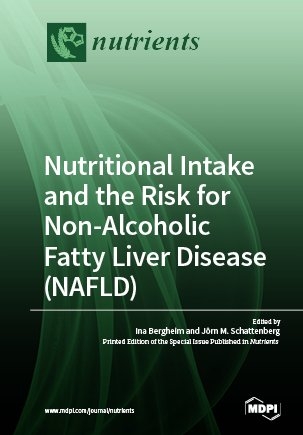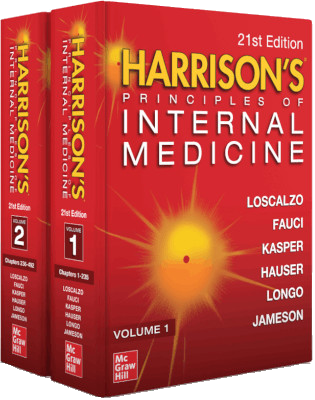
Nutritional Intake and the Risk for Non-alcoholic Fatty Liver Disease (NAFLD)
Seiten
2019
MDPI (Verlag)
978-3-03897-598-4 (ISBN)
MDPI (Verlag)
978-3-03897-598-4 (ISBN)
- Keine Verlagsinformationen verfügbar
- Artikel merken
The aim of this Special Issue focusing on “Nutritional Intake and the Risk of Non-Alcoholic Fatty Liver Disease” is to provide an in-depth overview of the role of the intake of different macro- and micronutrients in the development and progression of non-alcoholic fatty liver disease, as well as in its prevention and treatment. General over-nutrition but also alterations of the dietary pattern (e.g., towards a higher intake of fat, cholesterol, and sugar—and herein especially fructose) are discussed as being critical in the development of non-alcoholic fatty liver disease (NAFLD). However, it has also been suggested that a general reduction of caloric intake and/or modulation of dietary composition, be it in regard to fat or to sugar intake, may have beneficial effects on the liver status in settings of NAFLD. Furthermore, in more recent years, the intake of pre- and probiotics, but also of specific micronutrients or secondary plant compounds, has also been considered a means in the prevention and therapy of this disease. Despite intense research efforts during the last decades, our understanding of the effects of nutritional intake on the development as well as on the prevention and cure of NAFLD is still limited.
Providing a better understanding of the effects of diet and especially of specific macro- and micronutrients as well as pre- and probiotics and secondary plant compounds in the context of the development of NAFLD and its progression could lead to novel prevention and therapeutic strategies for this metabolic liver disease. This Special Issue will thus include original research and scientific perspectives on the relationship between NAFLD and dietary constituents that may 1) be involved in the development of the disease and 2) prevent its onset and progression. Mechanistic insights defining the contribution of certain nutritional factors (e.g., macronutrients like fat and sugar but also micronutrients and secondary plant compounds as well as pre- and probiotics) to the occurrence and management of NAFLD will improve our understanding of the disease and eventually lead to the development of universally accepted prevention and therapeutic strategies.
Providing a better understanding of the effects of diet and especially of specific macro- and micronutrients as well as pre- and probiotics and secondary plant compounds in the context of the development of NAFLD and its progression could lead to novel prevention and therapeutic strategies for this metabolic liver disease. This Special Issue will thus include original research and scientific perspectives on the relationship between NAFLD and dietary constituents that may 1) be involved in the development of the disease and 2) prevent its onset and progression. Mechanistic insights defining the contribution of certain nutritional factors (e.g., macronutrients like fat and sugar but also micronutrients and secondary plant compounds as well as pre- and probiotics) to the occurrence and management of NAFLD will improve our understanding of the disease and eventually lead to the development of universally accepted prevention and therapeutic strategies.
Department of Nutritional Sciences, Molecular Nutritional Science, University of Vienna, Althanstr. 14, UZA II, A-1090 Vienna, Austria
I. Department of Medicine, University Medical Center of the Johannes Gutenberg University, Mainz, Germany
| Erscheinungsdatum | 05.03.2022 |
|---|---|
| Mitarbeit |
Gast Herausgeber: Ina Bergheim, Jörn M. Schattenberg |
| Verlagsort | Basel |
| Sprache | englisch |
| Maße | 170 x 244 mm |
| Themenwelt | Sachbuch/Ratgeber ► Essen / Trinken ► Getränke |
| Sachbuch/Ratgeber ► Gesundheit / Leben / Psychologie ► Ernährung / Diät / Fasten | |
| Medizin / Pharmazie ► Gesundheitsfachberufe ► Diätassistenz / Ernährungsberatung | |
| Medizinische Fachgebiete ► Innere Medizin ► Diabetologie | |
| Studium ► Querschnittsbereiche ► Prävention / Gesundheitsförderung | |
| Schlagworte | Diabetes and Insulin resistance • dietary pattern • Non-alcoholic fatty liver disease • Nutrition • Sarkopenia |
| ISBN-10 | 3-03897-598-2 / 3038975982 |
| ISBN-13 | 978-3-03897-598-4 / 9783038975984 |
| Zustand | Neuware |
| Haben Sie eine Frage zum Produkt? |
Mehr entdecken
aus dem Bereich
aus dem Bereich
Vol. 1 & 2
Buch | Hardcover (2022)
McGraw-Hill Companies (Verlag)
229,99 €


